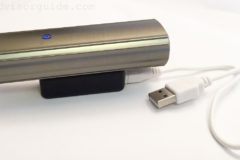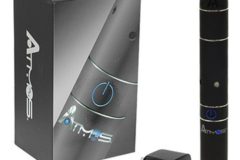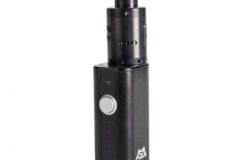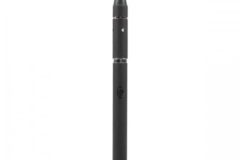Just as technology has changed the way we work, shop, and communicate, it has also changed the way in which we consume marijuana. We’re talking about using a vaporizer for ingesting weed. Although there has been a consistent increase in the popularity of vaporizers, there are still many people who are unaware of how they work. We plan on answering the most trivial questions on the topic!
Defining a Vaporizer
 Firstly, you should know that a vaporizer is an inhalation device you can use in order to release active substances. In plain English, a vaporizer transforms vaping material into vapors. Nevertheless, vaporizing shouldn’t be mistaken with smoking. That’s because a vaporizer depends on a heating source that disperses the active ingredients for recreation or therapeutic purposes. However, it’s worth noting that the temperatures aren’t as high as in to determine the burning of the marijuana.
Firstly, you should know that a vaporizer is an inhalation device you can use in order to release active substances. In plain English, a vaporizer transforms vaping material into vapors. Nevertheless, vaporizing shouldn’t be mistaken with smoking. That’s because a vaporizer depends on a heating source that disperses the active ingredients for recreation or therapeutic purposes. However, it’s worth noting that the temperatures aren’t as high as in to determine the burning of the marijuana.
Smoking weed, on the other hand, implies the release of a considerable degree of chemicals, toxic byproducts included. These are known to have detrimental effects on the body’s wellbeing. That is the fundamental reason why vaporizers are believed to be healthy substitutes.
How Does a Vaporizer Work?
There are two fundamental principles according to which vaporizers work when it comes to applying heat to the vaping material. We’re referring to conduction and convection. Let’s have a look at the pros and cons linked to both options.
- Convection
Convection is preferred for vaping flowers, primarily because it doesn’t combust the material. To that end, this method doesn’t involve an immediate contact between the heating element and the herb. In order to release the vapor, the air exposed to the heating source is transferred through the vaping material. In other words, the hot air passes through and around the herb.
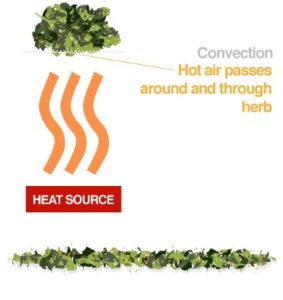 Evidently, devices that use this principle require a mechanism to transfer the air from the heating element to the herbs – such as whip-style and air-forced methods. These are some examples of convection vaporizers: Alternate Vaporizer – Vivant, Atmos Transporter Portable Dry Herb Vaporizer, Atmos Vicod 5G Portable Dry Herb Vaporizer. To that end, forced-air vaporizers are equipped with an internal fan, which has the role of pushing the hot air through the vaping material, thus, resulting in a steady vapor.
Evidently, devices that use this principle require a mechanism to transfer the air from the heating element to the herbs – such as whip-style and air-forced methods. These are some examples of convection vaporizers: Alternate Vaporizer – Vivant, Atmos Transporter Portable Dry Herb Vaporizer, Atmos Vicod 5G Portable Dry Herb Vaporizer. To that end, forced-air vaporizers are equipped with an internal fan, which has the role of pushing the hot air through the vaping material, thus, resulting in a steady vapor.
In the meantime, using whip-style vaporizers requires you to manually draw and inhale the air through a tube, which is referred to as a whip.
Advantages
- The herb is heated evenly.
- Reduced risk of combustion.
- Accurate temperature control.
Disadvantages
- Warming up times are slower.
- Vaporizers that use this principle might be pricier.
- Conduction
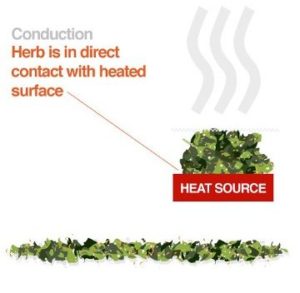 On the other side, the conduction principle implies that the vaporizing material enters direct contact with the heated surface. This is the cheapest and easiest method to use; hence, this type of vaporizer might be more widespread than the other type. These are some examples of conduction vaporizers: Crater Digital USB Portable Dry Herb Vaporizer, Alternate Vaporizer – Vivant, Crater Deluxe – Portable Dry Herb Vaporizer, PAX 3 Vaporizer.
On the other side, the conduction principle implies that the vaporizing material enters direct contact with the heated surface. This is the cheapest and easiest method to use; hence, this type of vaporizer might be more widespread than the other type. These are some examples of conduction vaporizers: Crater Digital USB Portable Dry Herb Vaporizer, Alternate Vaporizer – Vivant, Crater Deluxe – Portable Dry Herb Vaporizer, PAX 3 Vaporizer.
So, when it comes to a conduction vaporizer, the heat source is in direct contact with the herb, which means that the heating process is faster.
Advantages
- Easy, less complicated design.
- More affordable vaporizers.
- Fast warm-up
Disadvantages
- It necessitates stirring or shaking the herbs between draws.
- The risk of combustion is higher.
- Novices might find it more challenging to use.
On a final note, it’s up to you to determine which type of vaporizer is the best choice for you. There are certain pros and cons linked to each option, and they should be carefully considered if you’re thinking of vaporizing weed.






